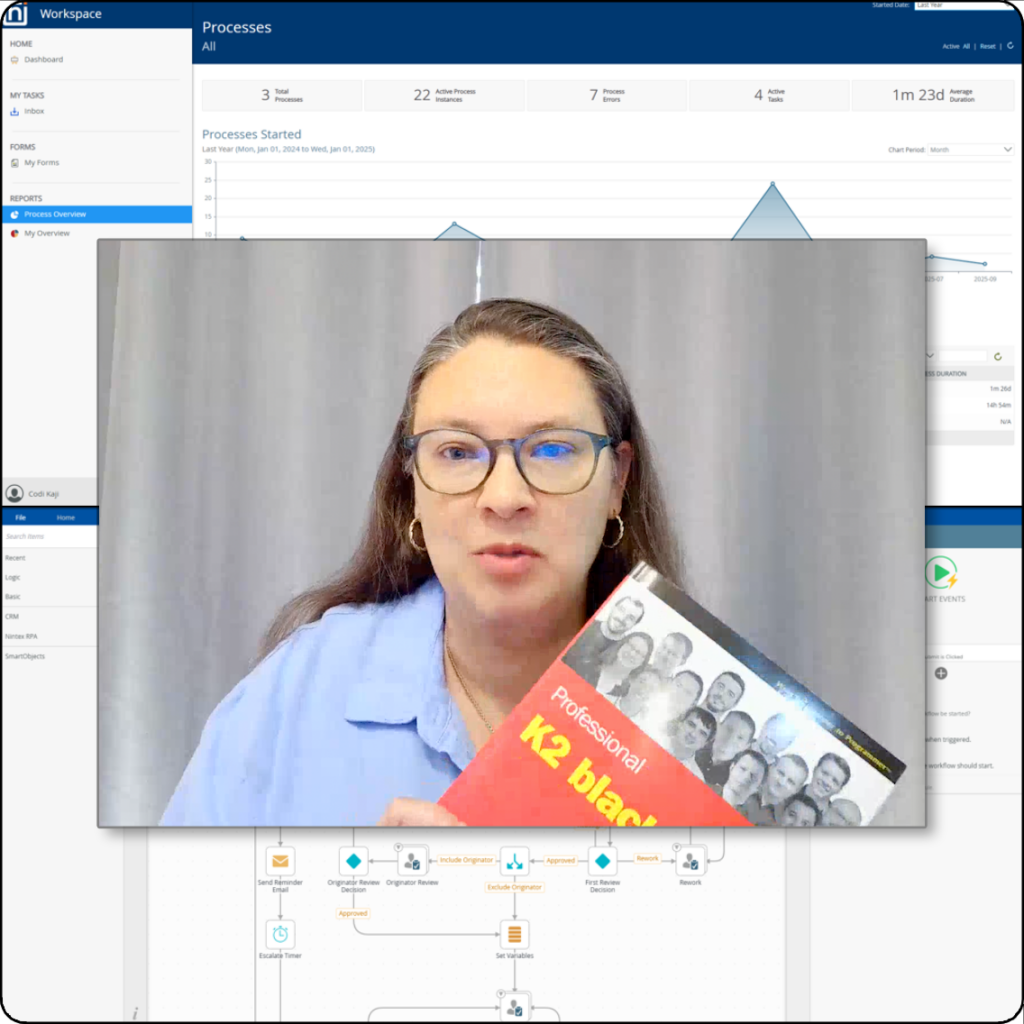An overview of modern K2 capabilities
K2 features you may have missed
An overview of modern K2 capabilities
Your K2 workflows are running reliably in the background, handling critical business processes day after day. That reliability is by design — we built K2 to be rock-solid, which is why organizations continue to depend on it for mission-critical operations. But while your automations have been quietly doing their job, we’ve been revolutionizing what’s possible with process automation.
We’ve modernized K2 across all components — not because earlier versions were inadequate, but because business demands have evolved dramatically. The processes that once required complex workarounds are now straightforward implementations, and integration challenges that demanded custom development are now point-and-click solutions. The modern K2 platform handles automation scenarios that would have been prohibitively expensive or technically complex before, while maintaining the same reliability and upgrade protection you’ve always counted on.
If anything in the following capabilities addresses a current challenge or enables something you’ve always wanted to automate, we’d love to show you a demo and discuss how these advancements might fit your specific needs and timeline.
Design & build
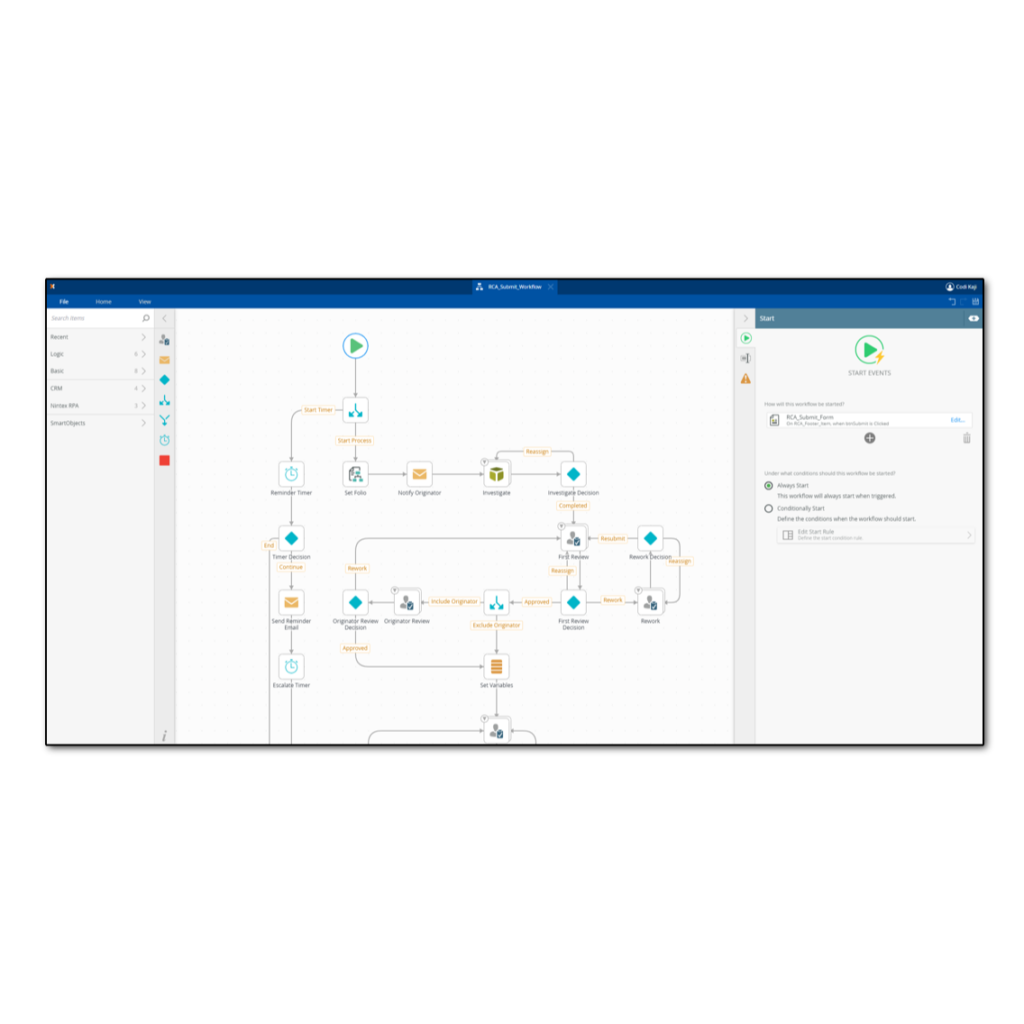
Workflow
The completely rebuilt K2 Workflow Designer expands what’s possible with modern process automation while maintaining the power you expect. The new architecture handles exponentially more complex scenarios — parallel sub-workflows, inline functions, dynamic routing with reusable SmartFields, and real-time error recovery — all through an intuitive visual interface. The enhanced SmartObjects framework now supports dynamic integration patterns and modern APIs, while responsive SmartForms deliver mobile-ready experiences with enterprise styling. Most importantly, everything upgrades seamlessly, protecting your existing investment while unlocking capabilities that weren’t previously feasible.
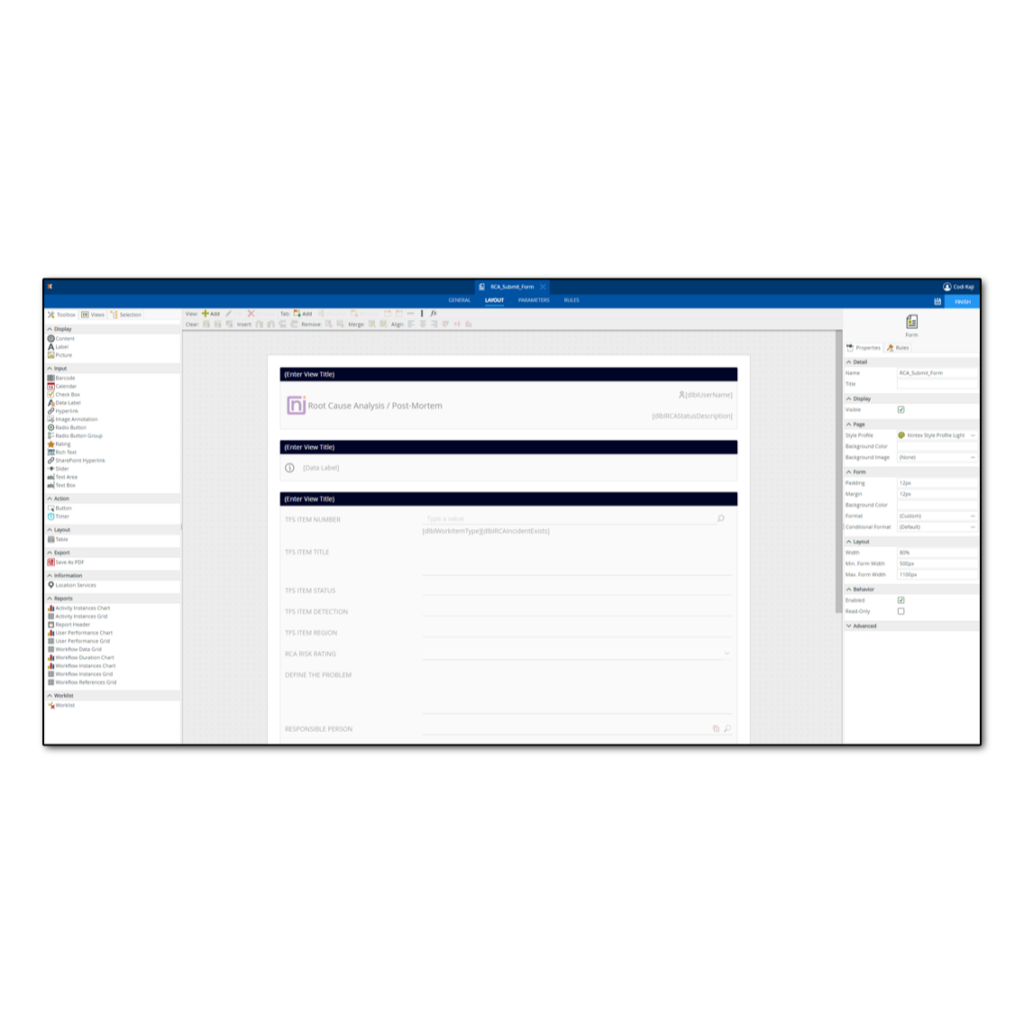
SmartForms
Enhanced for mobile-first experiences with responsive design, server-side performance optimizations, and enterprise styling capabilities. Efforts concentrated on delivering modern user interfaces while maintaining complete backward compatibility.
End user experiences
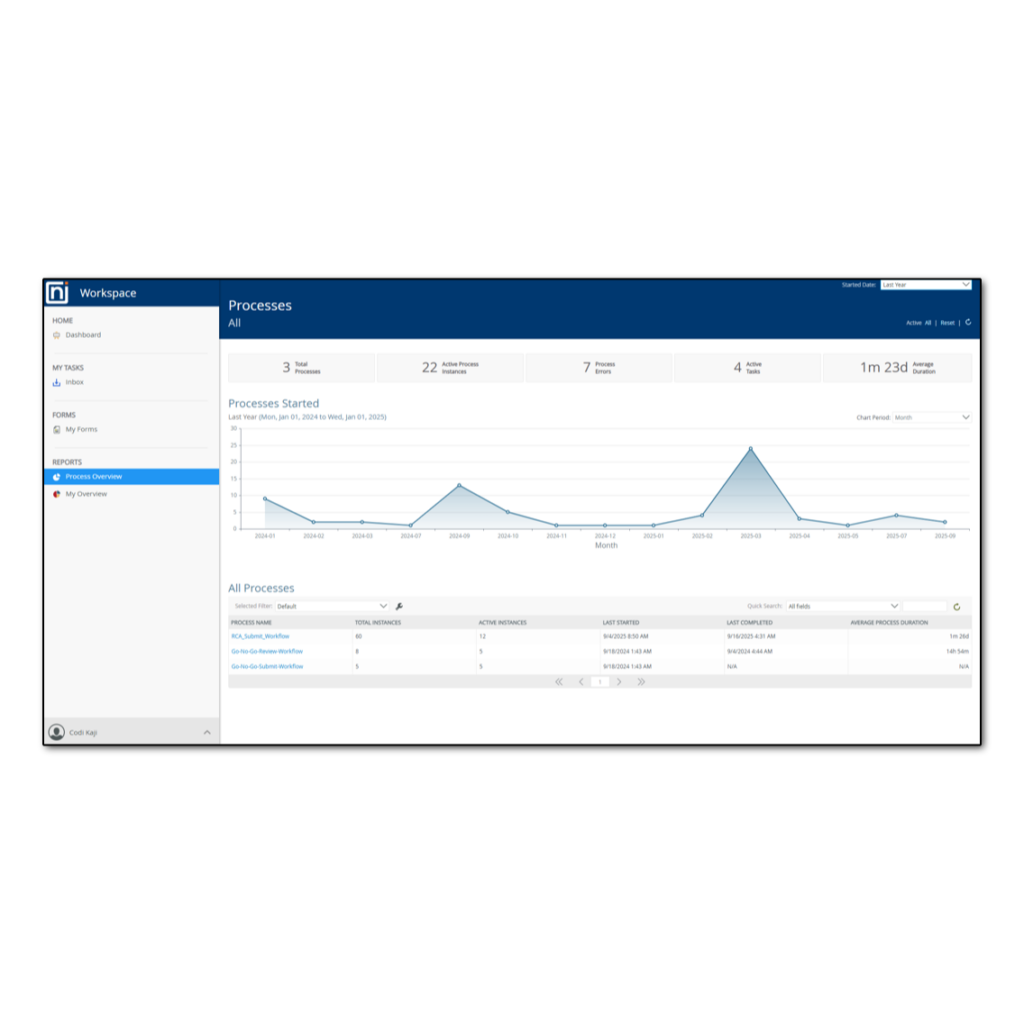
End user experiences
User adoption improves when automation feels as intuitive as consumer apps — that’s why we built centralized task management in the enhanced workspace and native mobile capabilities that work offline. Deployment speed reduces time-to-value and lets business units respond quickly to changing needs, so we created one-click application deployment via Apps and SmartStarters plus guided wizards that generate custom applications in minutes rather than months.
Governance and management
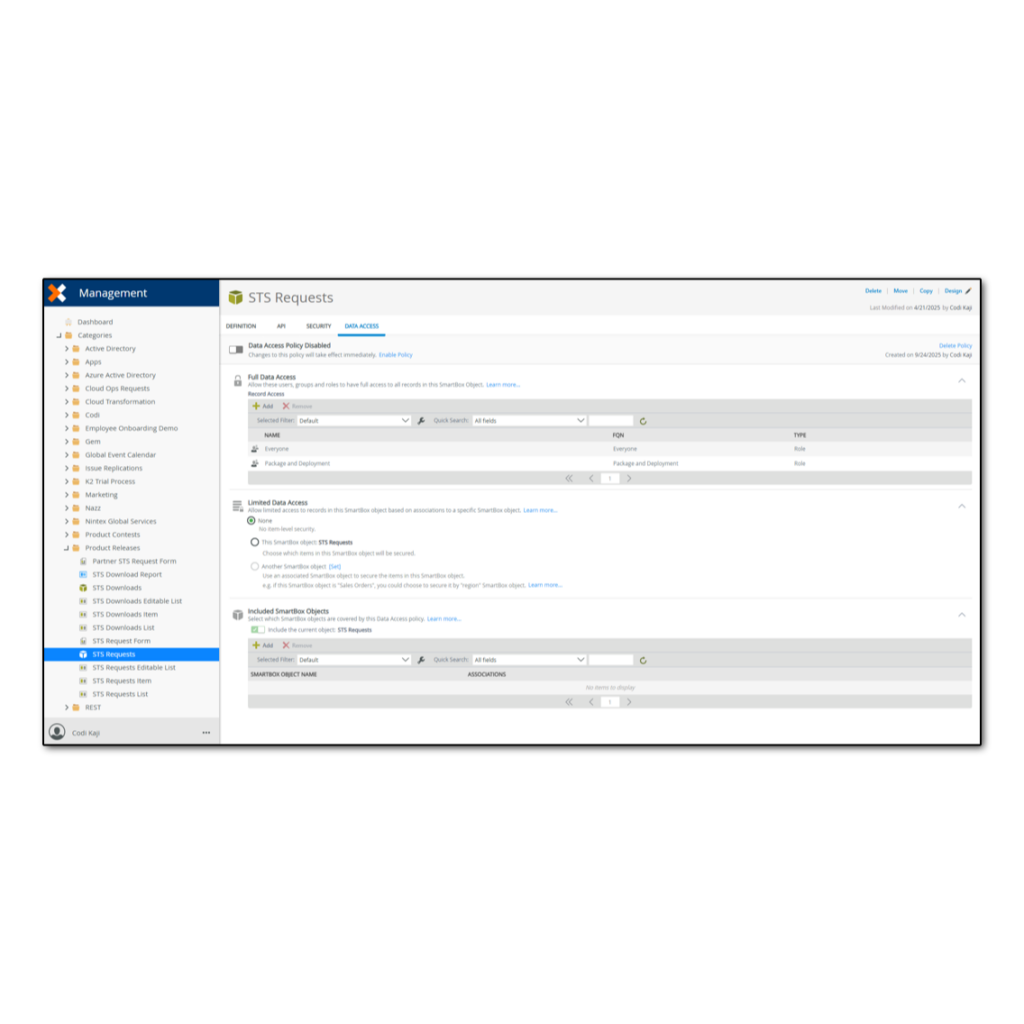
Governance and management
At Nintex, we recognized two big hurdles we could address around governance and management: Helping you tackle risk management challenges and giving you maximum operational control over your automation environment. We built granular authorization frameworks, patented row-level security, and comprehensive auditing capabilities that satisfy regulatory requirements, while providing administrators complete control over who can access, modify, and execute automation assets at scale across complex organizational structures.
Platform
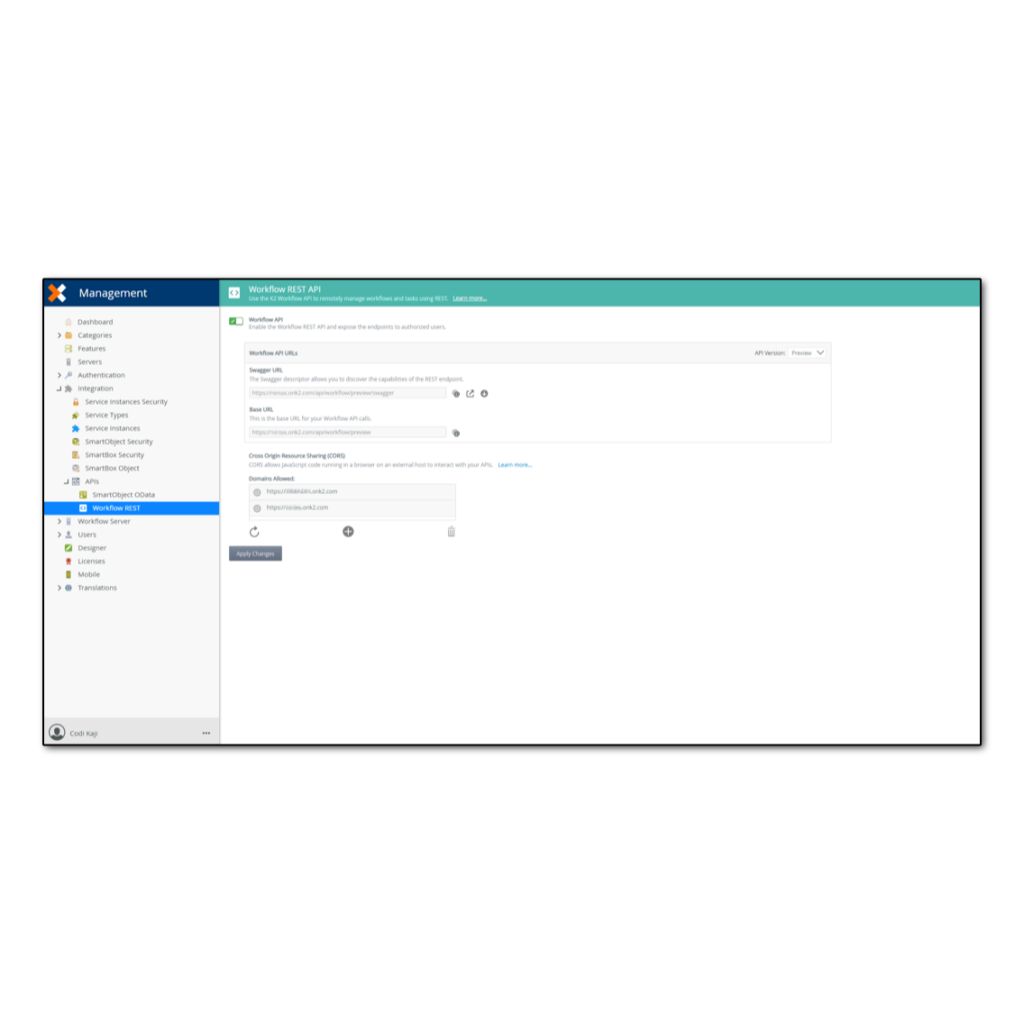
Platform
Vendor lock-in kills IT flexibility and wastes existing tool investments, so we built extensive OAuth-secured APIs that connect seamlessly with Power BI, Excel, and custom applications. Global operations demand consistent deployments without manual errors — that’s why we created comprehensive package and deployment capabilities with automatic dependency mapping plus native localization support. Complete process visibility ensures continuous improvement, which drove our development of detailed reporting and analytics from high-level metrics down to individual instance tracking.
Experience K2 in action
Seeing automation capabilities in a document is one thing — understanding how they apply to your specific environment is another. If any of these capabilities resonated with challenges you’re facing, we’d welcome the opportunity to explore your current situation and discuss what’s possible. Whether you’re dealing with integration complexity, managing intricate approval processes, or simply evaluating your automation roadmap, let’s have a conversation about your goals and timeline. We’re not here to dictate next steps — we’re here to help you understand how these advancements might fit your organization’s unique needs and priorities.
Please wait while form loads…
Frequently asked questions
-
Q. Will upgrading break my existing workflows and forms?
A. No. K2 maintains complete backward compatibility and upgrade protection. Your existing automations will continue working while gaining access to new capabilities.
-
Q. Do I need to rebuild my integrations to take advantage of SmartObjects enhancements?
A: Not necessarily. Enhanced SmartObjects work with your existing integrations, but you can optionally rebuild them to leverage new dynamic integration patterns and modern APIs.
-
Q: How much technical expertise do I need to use these new features?
A: The rebuilt Workflow Designer maintains K2’s visual, low-code approach. Business analysts can use most new features without deep technical knowledge, though some advanced capabilities benefit from IT involvement.
-
Q. What happens to my perpetual license if I upgrade?
A: Licensing discussions depend on your specific situation and goals. We can explore options that work within your budget and timeline during a consultation.
-
Q: Can I test these capabilities before committing to an upgrade?
A: Yes. We can provide demonstrations and discuss proof-of-concept opportunities to help you evaluate how these capabilities address your specific needs.
-
Q: How long does an upgrade typically take?
A: Upgrade timelines vary based on your environment complexity and testing requirements. We can provide a realistic timeline assessment based on your specific situation.
-
Q: Will my team need extensive retraining?
A: The core K2 concepts remain the same. Most users find the new interfaces intuitive, and we provide training resources to help teams leverage advanced capabilities.
-
Q: Are these features available in on-premises deployments?
A: Yes. K2 continues to support on-premises, cloud, and hybrid deployment options with full feature parity across deployment models.
-
Q: What if I discover issues after upgrading?
A: K2’s version control and rollback capabilities provide safety nets. We also offer support throughout the upgrade process to address any concerns quickly.
-
Q: How do I know which capabilities would benefit my organization most?
A: That’s exactly what we’d like to discuss with you. A consultation helps identify which capabilities align with your current challenges and future automation goals.
